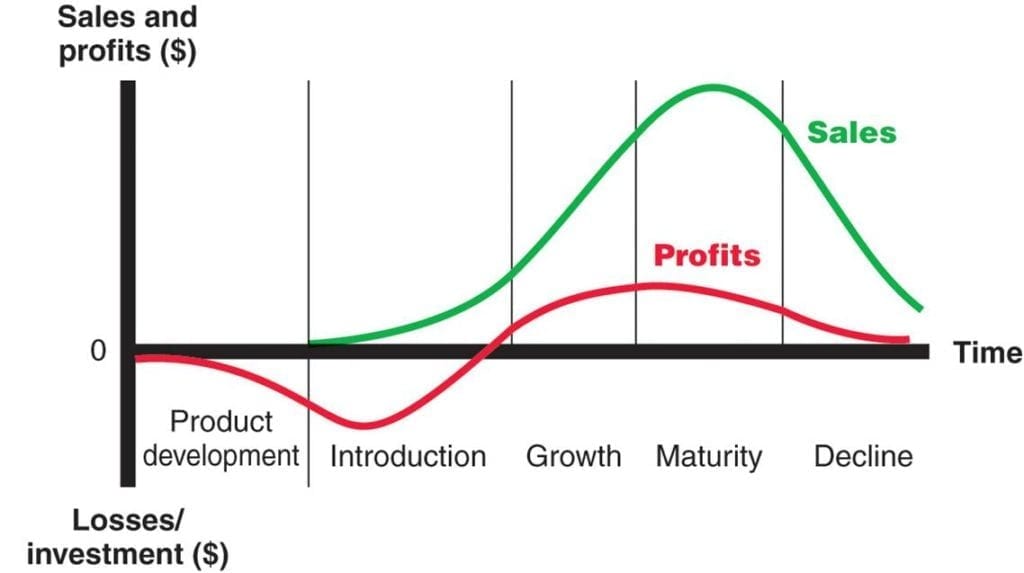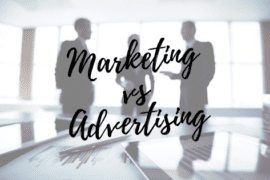The product life cycle stages show how a product transitions through its NPD (New Product Development) stage to growth, maturity, saturation, and decline.
This is an important tool for marketers and business owners. Because it helps to plan the investments required, and forecast the profitability that the business can generate throughout the lifespan of a product.
Various marketing strategies are used at each stage to maintain the product’s competitive edge and sustain its demand in the market while those that do not stay abreast with innovative strategies and changing demand patterns are bound to decline.
Table of Contents
Product Life Cycle Stages
The figure below illustrates how a new product transitions through different product life-cycle stages during its entirety. Following this, we’ll discuss each stage briefly to explain what happens when any product passes through.

New Product Development:
This is where the product idea gets conceptualized and developed after which it is tested for utility and market demand is ascertained through research.
Introduction:
During the introduction stage, the product is introduced to the market for the end consumers use, however, the product should be based on a selling idea and marketed aggressively to generate demand.
However, not all products succeed and even those that later become market leaders could be dealt with skepticism. For example, when Apple first introduced its iPod in October 2001 analysts foresaw the company’s downfall and not much of a market for such a product. However, by 2004 it became a huge success for the brand and through iTunes, Apple had acquired 70% of the market for legal music downloads. By the end of 2004, Apple ended up selling 10 million iPods.
Companies like Apple that end up creating a highly innovative product are able to gain the ‘first mover advantage’ and early adopters happily buy their products especially when there is a cult following.
Growth Stage:
If the product is able to gain share from the previously untapped needs and gets to capture a considerable market share it then enters the growth stage where the sales rapidly increase as a result of a good customer base being acquired and the product becomes a cash cow. This is also called the take-off point, as profits increase.
Competitors also deploy reactive strategies in a quest to grab a competitive edge over the new rival. This creates avenues for the increase in market size. This is where the PLC curve becomes steep and witnesses and upward trend.
This is where aggressive advertising strategies are continued to be made use of to fulfill the ‘inform’ function. Most of the customers comprise of early majority.
Saturation/Maturity Stage:
During the saturation stage, sales slowdown as maturity is reached. There is a greater need to maintain the same customers and persuade them to continue buying using promotional tactics. Bundle offers are commonly used by brands to lure customers away from competition and prices become more cutthroat.
Weaker competitors are forced out of business at what is also known as the shake-out point. In order to retain brand loyalty, the company has to tackle price competition while maintaining profitability. At this stage, while slashing prices, a company that has a decent portfolio of products can cross-subsidize the mature brand using cash inflows from its Star products to sustain it.
Brands like Coca-Cola have evolved over the years to meet changing customer needs and continued being the talk of the town.
Decline:
If companies are not able to retain their products at the maturity stage, decline becomes inevitable for them. Here sales start falling and it becomes a challenge to break even. This stage is often the case of the brand not innovating itself with new market entrants offering better substitutes to consumers.
For instance, the decline of Kodak as a result of the advent of digital photography. It is essential to apply extension strategies comprising of amendments to the marketing mix; upgrading the packaging, re-inventing the product, or adding new elements.
Companies may want to harvest the product and create room to develop new products or plan a phased withdrawal. One last resort of retaining a few selected customers through a niche customer base is either sub-contracting or selling the product to a company that can afford its production.






